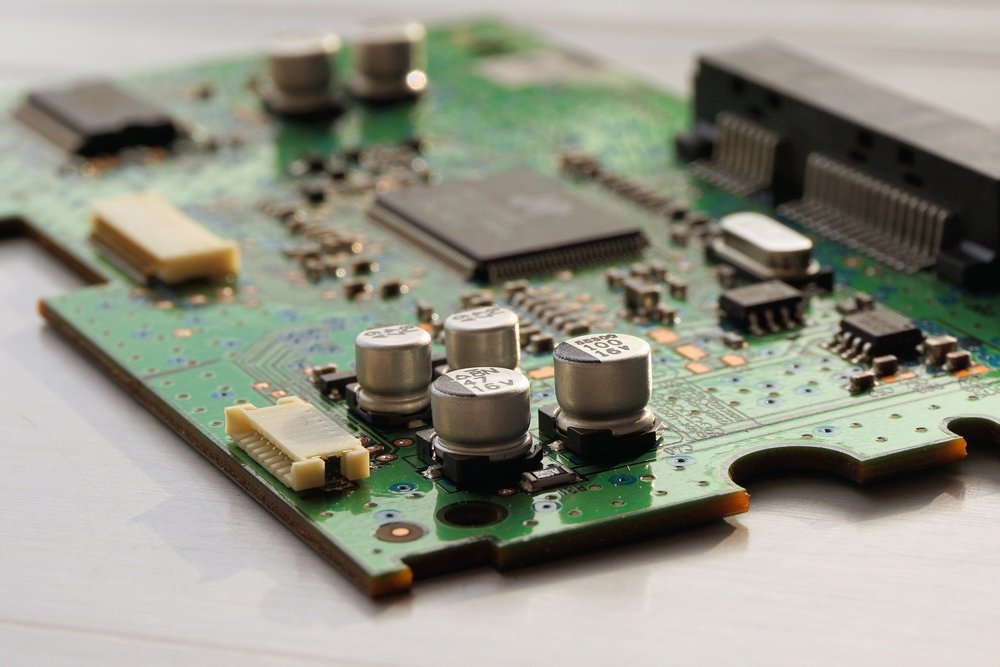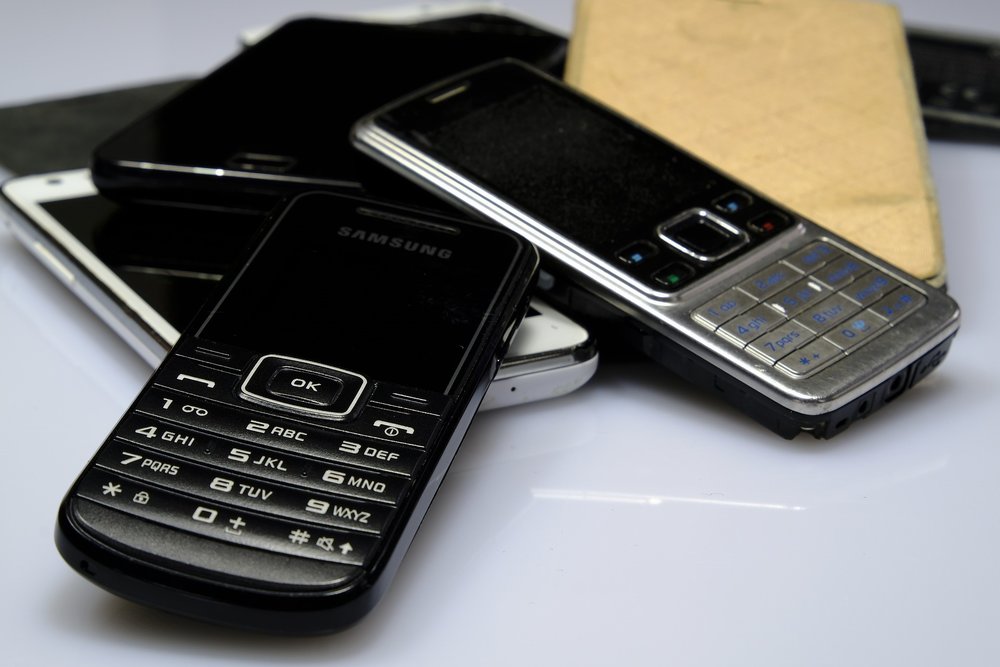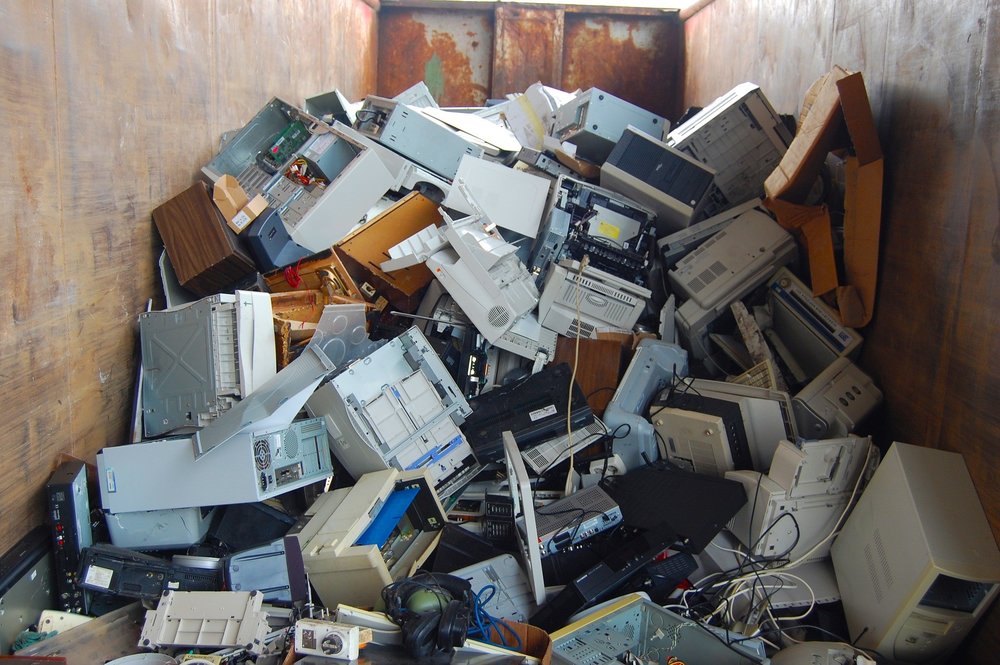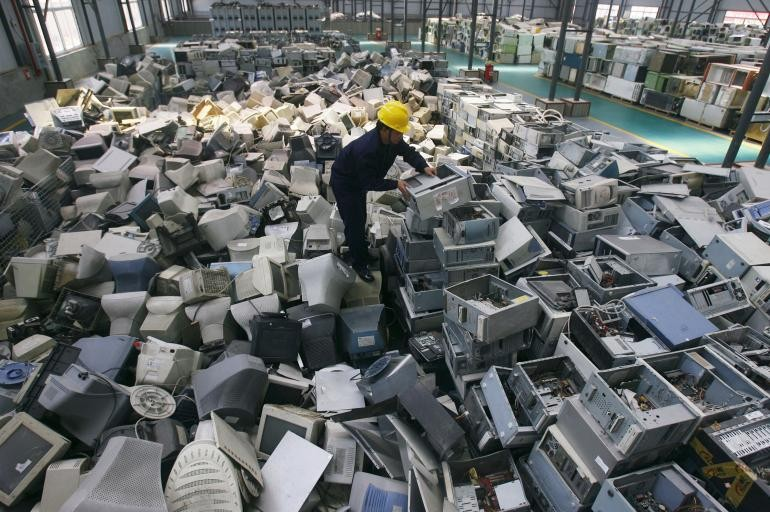Circuits and Boards: What You Want To Know About Electronic Recycling

Take a good look around you and notice how electronics have influenced us. From being woken up in the morning by our alarm clocks to setting our security systems before bed, electronics are prevalent in our lives more than we care to admit. Our electronics have lives and as time marches forward, they will become futile as they are replaced by newer versions or worn down. Our modern world relies on various electronic systems, and with the rapid growth rate of our technology, you might wonder where do all our old devices end up? Enji had the same question too, and we decided to do a little research and give you everything you need to know about electronic waste.
What is E-waste?

The first thing we should establish before we dive head first into this topic is the definition of electronic waste. Electronic waste, or E-waste, is defined by CalRecycle.ca.gov, “E-waste is a popular, informal name for electronic products nearing the end of their "useful life." Computers, televisions, VCRs, stereos, copiers, and fax machines are common electronic products.” This means that any electronic you eventually get rid of will be considered electronic waste.
Electronic waste is a big concern for the planet. In large quantities these devices can release toxic chemicals and poison surrounding areas. With the rapid growth in the technological industries the growth of e-waste is exponential. Properly disposing and recycling of these items is critical now more than ever before.
Where does it go?

There are a few ways to dispose of your electronic products such an electronic waste bin, a buyback program, or recycling centers. Most of these places will take your old computer and find ways to recycle hazardous parts and metals. However, because of relaxed recycling laws in the US, if you don’t do your research on these facilities your e-waste might end up being someone’s problem.
There are a few scandals in the electronic recycling industry. Although most facilities are regulated, there are a few who pose simply as environmentally friendly recycling options to have the electronic outsourced to developing countries. Recyclers can make a quite a bit of money from salvaging metals, so they send many of their electronics and parts to impoverished countries. These developing countries tend to have more relaxed laws about labor and material disposal than the United State, often workers do not have protective gear from toxins and work in unfavorable conditions.
There are those of course, who seek to do things the right way. Authentic recycling plants will often remove many parts in house and send pieces that require more specialized attention to proper outside sources.
How does it get recycled?

The process of recycling electronic waste is a lengthy one. Below are just some of the steps facilities in the United States use when recycling their electronic waste.
Picking/ Sorting: E-waste will have to be sorted into categories and batteries removed for inspection. This is usually done manually.
Disassembly: After the electronics are sorted into categories, they are further broken down and parts that can be reused are kept for refurbishing.
First size reduction process: Items that cannot be broken down are placed through a shredding process where pieces become less than 2 inches. This proactive step will become important as e-waste travels through the recycling process.
Second size reduction process: The finer pieces of e-waste are then processed on a conveyor belt where they are spread out and broken in even smaller pieces. Dust and fine particles are properly disposed of.
Overhead Magnet: This step is as straightforward as it sounds. A giant magnet pulls metallic items from above the conveyor belt.
Non-metallic and metallic components separation: Unfortunately, the magnet will not pull all metals. This step is to ensure nonmagnetic metals such as copper and brass are separated from non-metallic items. These metals are usually resold as raw materials or used for fresh manufacturing of other parts.
Water Separation: This is usually the last step in the process. Water helps separate materials such as plastics, glass, and other various materials that cannot be sorted through previous steps.
How can you be sure you recycle responsibly?

Although there can be deceitful people looking to line their pockets, the best way to make sure you are being part of the solution and not part of the problem is to do your own research. Look into the company you will be donating your electronic waste to. What are their steps? Do they have any reviews? Don’t just look at their website, dig deeper to find the truth. These are all ways you can ensure you do not have your electronic waste become someone else’s problem.
Sources:
https://www.npr.org/2010/12/21/132204954/after-dump-what-happens-to-electronic-waste
https://www.budgetdumpster.com/blog/what-happens-to-ewaste/
https://www.worldatlas.com/articles/what-happens-to-electronic-waste.html
https://www.conserve-energy-future.com/e-waste-recycling-process.php





